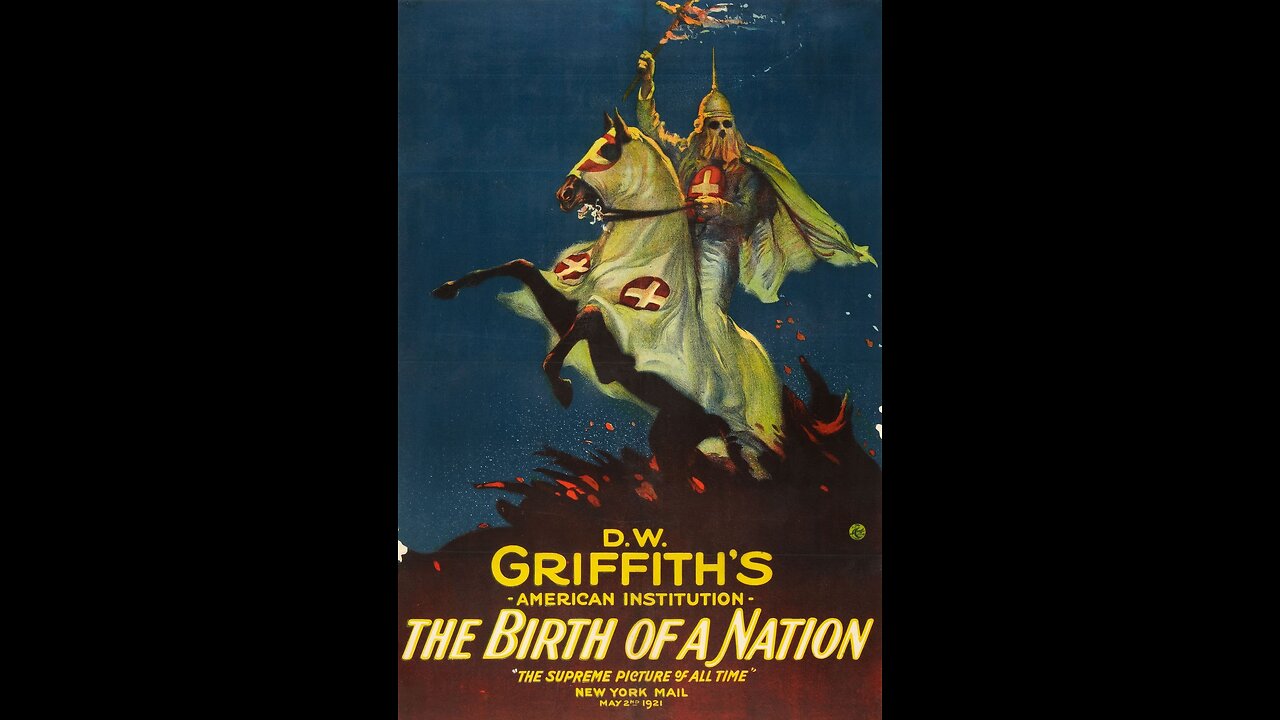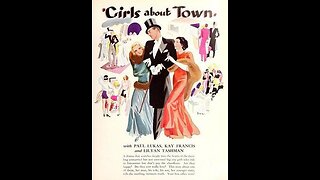Premium Only Content

D.W. Griffith’s “The Birth of a Nation” (1915): A Cinematic Landmark & Controversial Legacy
"The Birth of a Nation," directed by D.W. Griffith and released in 1915, stands as a cinematic landmark that revolutionized the art of filmmaking while simultaneously sparking intense controversy for its controversial content. This groundbreaking silent film marked a turning point in the history of cinema, introducing narrative techniques and technical innovations that would shape the industry for decades to come.
"The Birth of a Nation" is celebrated for its technical achievements, pioneering storytelling methods, and innovative use of cinematography. D.W. Griffith, often hailed as the "Father of Film," introduced several cinematic techniques that were groundbreaking for the time. The film's use of close-ups, cross-cutting, tracking shots, and panoramic scenes were unprecedented and played a crucial role in shaping the language of cinema.
Despite its technical brilliance, "The Birth of a Nation" is marred by its deeply controversial content and racist depictions. Adapted from the novel "The Clansman" by Thomas Dixon Jr., the film glorifies the Ku Klux Klan and perpetuates harmful stereotypes of African Americans. The portrayal of African American characters by white actors in blackface makeup perpetuates offensive caricatures, reinforcing racial prejudices prevalent in the early 20th century.
The film's immense success at the box office marked a turning point in the film industry, demonstrating the potential of feature-length films as a lucrative form of entertainment. The financial success of "The Birth of a Nation" influenced the industry's shift towards longer narratives and the establishment of Hollywood as the center of American filmmaking.
While "The Birth of a Nation" is acknowledged for its technical contributions, its legacy is tainted by its perpetuation of racist ideologies. The film's glorification of the Ku Klux Klan and demeaning portrayal of African Americans have sparked enduring criticism and protests. Over the years, discussions surrounding the film have focused on the tension between its cinematic significance and its harmful impact on racial attitudes.
To fully understand the impact of "The Birth of a Nation," it is essential to consider the historical context in which it was produced. The film premiered during a period of racial tension and societal upheaval, with the legacy of the Civil War and Reconstruction shaping the cultural landscape. The film's distorted portrayal of history further fueled racial animosity, contributing to its controversial reception.
As society grapples with issues of racial inequality and representation, "The Birth of a Nation" continues to be a subject of debate and reflection. Film scholars, historians, and cultural critics engage in discussions about whether the film should be studied for its technical contributions while acknowledging its problematic content or whether its impact on racial perceptions overshadows its cinematic achievements.
"The Birth of a Nation" remains a pivotal and divisive film in the history of cinema. Its technical innovations paved the way for future filmmakers, but its legacy is inextricably linked to its harmful racial depictions. As discussions about racial representation in media persist, the film serves as a complex and controversial touchstone, challenging audiences to confront the dual nature of its historical significance.
-
 1:19:21
1:19:21
Classic Films & Movies Archive
1 day agoGirls About Town (1931) | Directed by George Cukor
1403 -
 1:07:59
1:07:59
BonginoReport
4 hours agoBoston Mayor Defies Trump, Protects Illegals - Nightly Scroll w/ Hayley Caronia (Ep.115)
79.8K51 -
 40:45
40:45
Donald Trump Jr.
5 hours agoPeace by Peace: Solving One Problem After Another | Triggered Ep.268
39.9K49 -
 LIVE
LIVE
FrizzleMcDizzle
2 hours agoRemnant 2 - Dark Souls-like Shooter?!
59 watching -
 LIVE
LIVE
FoeDubb
45 minutes ago🏰KINGDOM MENU: 🏈FOOSBALL & 🎮DELTA FORCE PEW PEWS DILLY DILLY!!
22 watching -
 11:43:31
11:43:31
GritsGG
12 hours agoWin Streaking! Most Wins 3390+ 🧠
53.3K -
 1:08:29
1:08:29
TheCrucible
4 hours agoThe Extravaganza! Ep. 24 (8/19/25)
72.9K14 -
 4:22:25
4:22:25
sophiesnazz
5 hours ago $0.55 earnedLETS TALK ABOUT BO7 !socials !specs
13.2K -
 1:27:30
1:27:30
Redacted News
5 hours ago"There will be consequences!!!" Trump issues big threat to Putin ahead of peace summit | Redacted
97.8K151 -
 LIVE
LIVE
Amish Zaku
3 hours agoWar Thunder - Tank Tuesday
63 watching